Slow Cooker Chicken Breast and Potatoes
Easy Slow Cooker Chicken Breast with Potatoes: Cooking Time, Temperature & Tips for Juicy Meat

As a chef, I’ve always appreciated recipes that combine minimal ingredients with maximum reward. Chicken breast and potatoes in a slow cooker is exactly that—a classic, nourishing combination that’s easy for beginners and satisfying for seasoned home cooks alike. What makes this version shine is the slow infusion of flavor, the gentle heat that keeps the meat moist, and the reliable pairing of lean protein with hearty potatoes.
- Why This Recipe Works: Simple, Juicy, and Ideal for Everyday Cooking
- Essential Ingredients and Equipment: Keep It Smart and Simple
- Step-by-Step Preparation: From Raw Ingredients to Tender Perfection
- Time and Temperature Table: The Key to Juicy Chicken
- Nutrition Breakdown: Balanced, Light, and Satisfying
- Microwave Version: Fast but Less Flavorful
- Instant Pot or Pressure Cooker Method
- Stovetop Skillet or Dutch Oven Variation
- Oven-Baked Alternative: Golden and Flavorful
- Common Mistakes and How to Avoid Them
- Simple Sauce Ideas to Enhance the Dish Without Overpowering It
- Seasoning Profiles That Work Without Excess Calories
- Variations You Can Trust (From Years of Testing)
- Plating, Pairing, and Making It Feel Like a Restaurant Meal
- FAQ: 15 Questions I’ve Answered Dozens of Times (And My Honest Advice)

Why This Recipe Works: Simple, Juicy, and Ideal for Everyday Cooking
This dish works not just because it’s convenient, but because it allows the natural flavors to develop without needing much fat or complex steps. It’s ideal for weeknight meals, meal prep, or even casual entertaining. And with the right timing, temperature, and seasoning tricks, you can produce chicken that’s juicy every time—not dry or bland like many low-fat meals tend to be.
Essential Ingredients and Equipment: Keep It Smart and Simple
I keep this recipe clean and focused—nothing complicated, nothing artificial. You’ll need:
Ingredients:
- 2–4 boneless, skinless chicken breasts
- 4–5 medium Yukon Gold or red potatoes
- ¾ cup low-sodium chicken broth
- 1 tablespoon olive oil
- 3–4 garlic cloves, minced
- 1 teaspoon onion powder
- ½ teaspoon dried thyme
- ½ teaspoon paprika
- Kosher salt and black pepper to taste
- Optional: lemon juice, fresh parsley, Dijon mustard
Equipment:
- 6-quart slow cooker
- Sharp chef’s knife
- Cutting board
- Measuring spoons
- Tongs or spatula
- Meat thermometer (highly recommended)
The beauty is that once it’s set up, the slow cooker does all the work. It’s one of the few methods I trust enough to “set and forget,” knowing the result will still be excellent.

Step-by-Step Preparation: From Raw Ingredients to Tender Perfection
The preparation starts with simple seasoning. I pat the chicken breasts dry with a paper towel, then season both sides generously with salt, pepper, paprika, onion powder, and thyme. I let them sit for 10–15 minutes while prepping the potatoes—this resting time helps the seasoning absorb better.
For the potatoes, I cut them into even chunks, about 1½ inches each. I leave the skins on if they’re smooth, since it adds nutrients and holds the shape. I toss them in a bowl with olive oil, garlic, and a pinch of salt and pepper.
In the slow cooker, I layer the potatoes first to create a base, then place the chicken breasts on top. Finally, I pour the broth around the edges and over the meat. The broth helps steam the ingredients gently and infuse moisture.
I cover and cook on Low for 5–6 hours, or High for 2½–3 hours—never longer for chicken breast, or you risk drying it out. Once it reaches 165°F (74°C), it’s done. I let the dish rest for 10 minutes before serving to let the juices redistribute.
Time and Temperature Table: The Key to Juicy Chicken
| Cooking Method | Temperature | Time Required | Notes from My Kitchen |
| Slow Cooker – Low | ~190°F / 88°C | 5–6 hours | Best for juiciness and flavor infusion |
| Slow Cooker – High | ~300°F / 149°C | 2½–3 hours | Faster, but watch doneness closely |
| Resting Period | Room Temp | 10–15 minutes | Essential for final texture |
Overcooking is the most common mistake I see with chicken breast. These time guidelines are based on what has worked for me consistently, even with variations in thickness.
Nutrition Breakdown: Balanced, Light, and Satisfying
This dish is naturally low in fat and rich in lean protein. Each serving (1 chicken breast + 1 cup potatoes + broth) contains approximately:
- Calories: 310–340
- Protein: 34–36g
- Carbohydrates: 28–32g
- Fat: 6–8g
- Fiber: 3–4g
- Sodium: 400–500mg
What I appreciate most is how satisfying it is—without the need for cheese, butter, or cream. It’s a recipe that leaves you full and fueled, not sluggish.
Microwave Version: Fast but Less Flavorful
If you’re in a dorm, office, or just don’t have a slow cooker handy, there is a workaround. I’ve made this in the microwave by precooking the potatoes with a bit of broth in a covered dish for 6–8 minutes. Then I layer in seasoned, thinly sliced chicken breast, cover again, and cook in 3-minute bursts on Medium.
It’s functional, and the chicken does get cooked through. But I’ll be honest—it lacks the depth and tenderness of the slow-cooked version. Use this method only when time or equipment constraints demand it.
Instant Pot or Pressure Cooker Method
This method is my go-to when I need the same result in under 30 minutes. I layer potatoes in the pot with broth and seasonings, then place chicken on top. I seal the pot and cook on High Pressure for 9 minutes, followed by 5 minutes of natural release, then finish with a quick release.
When I lift the lid, the chicken is juicy and the potatoes are perfectly soft. Letting it rest with the lid off for 5 more minutes helps absorb some of the remaining liquid. A great option for weeknights or meal prep.
Stovetop Skillet or Dutch Oven Variation
When I want more caramelization, I go for a Dutch oven. I sear the chicken for 2–3 minutes per side, then remove it while I sauté garlic and onions with the potatoes. I return the chicken, add broth, cover, and simmer for about 40–45 minutes on low heat.
This method takes more babysitting but rewards you with deeper flavor. The combination of browning and braising creates a restaurant-style richness without needing extra fat.
Oven-Baked Alternative: Golden and Flavorful
Sometimes I bake the entire dish instead—especially when I want slightly crisp potatoes. I place everything in a casserole dish or Dutch oven, cover with foil, and bake at 375°F (190°C) for 45–60 minutes, removing the foil for the last 10 minutes.
The chicken comes out juicy if you don’t overcook, and the potatoes develop that satisfying oven-roasted texture. I often add a squeeze of lemon juice or spoonful of broth when serving to keep things moist.

Common Mistakes and How to Avoid Them
In my years of teaching home cooks and training young chefs, I’ve seen the same errors again and again when it comes to chicken breast in a slow cooker. Fortunately, they’re all avoidable once you know what to watch for.
The biggest issue is overcooking the chicken. Chicken breast is lean and delicate, and if you leave it in a hot environment too long—even a moist one—it becomes chalky and dry. That’s why I always recommend using a meat thermometer and removing the chicken the moment it hits 165°F (74°C).
The second mistake I see is using too much liquid. A slow cooker traps steam. If you add too much broth, the potatoes end up soggy and the flavor gets diluted. I only add just enough liquid to barely cover the base layer.
Another common problem? Cutting the potatoes too small. They break down too quickly, turning into mush. Keep them in chunks—1.5 inches or so—and they’ll hold their shape beautifully.
Lastly, under-seasoning is a silent killer of flavor. Because there’s no browning or evaporation in the slow cooker, you have to build the seasoning deliberately—layered, bold, and aromatic.
Simple Sauce Ideas to Enhance the Dish Without Overpowering It
This dish is subtle, so I like to keep the sauces light, fresh, and supportive—not overwhelming. One of my favorites is a lemon-Dijon drizzle made by whisking together a teaspoon of Dijon mustard, fresh lemon juice, a touch of olive oil, and finely chopped parsley. It adds brightness and acidity to cut through the starch.
Another option I often prepare is a herbed yogurt sauce: plain Greek yogurt, garlic, lemon zest, chopped dill or parsley, and a pinch of salt. Spooned over warm chicken, it adds creaminess and a cooling contrast.
I also sometimes reduce the cooking broth in a saucepan, stir in a bit of whole-grain mustard and a splash of vinegar, and simmer it until it becomes a silky light gravy. It’s elegant but still in line with the clean, light nature of the dish.
The key is balance: any sauce should enhance the chicken and potatoes, not mask them.
Seasoning Profiles That Work Without Excess Calories
Without fat or cheese to carry flavor, seasoning becomes your most important tool. I don’t rely on any one blend—instead, I adjust based on what the dish needs and who I’m cooking for. My go-to approach is to layer seasoning in stages—some on the chicken, some on the potatoes, and a finishing touch when serving.
For an earthy, comforting profile, I use thyme, garlic, smoked paprika, and rosemary. For something brighter, I swap to lemon zest, black pepper, parsley, and a hint of crushed red pepper.
The magic of these combinations is that they transform the dish without adding a single calorie. When seasoning is intentional, it turns a plain meal into something memorable.

Variations You Can Trust (From Years of Testing)
I’ve cooked this dish in dozens of ways over the years, both for clients and at home, and these are a few that always deliver.
For a Mediterranean twist, I add sliced olives, sun-dried tomatoes, lemon wedges, and oregano. It’s punchy, fragrant, and gorgeous on the plate.
If I want something more warming, I go Indian-inspired, adding turmeric, cumin, ginger, and a dash of garam masala to the broth. I sometimes serve it with basmati rice instead of potatoes or add frozen peas in the last 30 minutes.
Another version I love uses sweet potatoes instead of white ones, with cinnamon, smoked paprika, and chili powder. The natural sweetness pairs beautifully with spicy elements.
When I want to prep for lunchboxes, I slice the cooked chicken, toss it with roasted bell peppers, and pair it with the potatoes and a quick vinaigrette. Cold or hot, it works.
What makes this dish so versatile is that it welcomes new flavor profiles without changing the core technique.
Plating, Pairing, and Making It Feel Like a Restaurant Meal
Turning this simple dish into something elegant starts with intention. I begin by slicing the chicken breast on a diagonal and fanning the pieces over the potatoes in a shallow bowl or plate. I spoon a bit of reduced broth around—not over—the meat so it doesn’t soak everything.
Then I think color. A sprinkle of finely chopped parsley, a few slivers of pickled red onion, or even a dusting of smoked paprika brings visual life to the dish.
For pairings, I recommend a light green vegetable—steamed asparagus, sautéed spinach, or blanched green beans tossed in lemon juice. These add texture and freshness to the richness of the potato.
If I’m serving guests, I might include a small starter—like a citrus salad with arugula—or end the meal with fruit sorbet. The point is: don’t crowd the plate, but make each part thoughtful. It shows care, and that’s what people remember most.

FAQ: 15 Questions I’ve Answered Dozens of Times (And My Honest Advice)
Can I cook frozen chicken breast directly in the slow cooker?
I’ve tried it before, but I don’t recommend it. Frozen chicken takes too long to reach a safe temperature in a slow cooker, which can cause bacteria to grow. I always thaw chicken in the fridge overnight before cooking—better texture, safer results.
What kind of potatoes work best?
I’ve tested many, and Yukon Golds are my top pick. They hold their shape, cook evenly, and have a creamy texture. Red potatoes are also great. Avoid russets—they break down too easily and become grainy.
Should I sear the chicken first?
Not required, but if you want deeper flavor, go for it. I sometimes sear the breasts quickly in olive oil for color and a slight crust. It adds five minutes but improves both look and taste.
How can I make sure the chicken doesn’t dry out?
I always use a meat thermometer. Once the chicken hits 165°F (74°C), I turn off the slow cooker and let it rest. Overcooking is the enemy of juicy chicken, and slow cookers make it easy to forget the time.
Is it okay to cook this on High?
Yes, and I often do on busy days. Just reduce the total cooking time to around 2.5 hours and check doneness early. On High, I also add a bit more broth to prevent drying out.
Can I add vegetables?
Absolutely. I’ve added carrots, parsnips, celery—even green beans (but only near the end). Just avoid delicate vegetables like zucchini unless you’re okay with them becoming soft.
How long will leftovers keep?
In my experience, up to 4 days in the fridge. I store the chicken and potatoes with a bit of broth to keep them moist. For reheating, I use medium heat and always add a splash of liquid to revive the texture.
Can I freeze this meal?
Yes—and I do it all the time. I cool everything completely, then freeze in individual containers with broth. It reheats beautifully if thawed in the fridge overnight, then warmed gently on the stove or in the microwave.
What’s the best way to reheat it?
Stovetop is my preferred method. I place the food in a covered pan with a splash of broth and heat slowly. Microwave works too, but use medium power and cover the dish to retain moisture.
Can I use boneless thighs instead of breast?
Definitely. They’re more forgiving and stay moist even if slightly overcooked. Just note the calorie count goes up slightly with dark meat.
Can I use sweet potatoes instead?
I’ve done this often, and it’s great. Just be careful not to cut them too small—they soften faster than white potatoes. I usually add a pinch of cinnamon or chili powder for balance.
Do I need to peel the potatoes?
No, and I rarely do unless the skins are tough. The skins add fiber and flavor. Just scrub them clean, and you’re good to go.
How do I thicken the broth into a sauce?
I reduce it in a pan or add a cornstarch slurry near the end of cooking. It turns the cooking liquid into a light, flavorful gravy that pulls the dish together.
Can I use this recipe for meal prep?
Absolutely. I portion everything into containers with broth and reheat throughout the week. The flavors actually deepen after a day or two.
How do I add more flavor without adding calories?
I rely on citrus juice, fresh herbs, mustard, vinegar, garlic, and spices. A squeeze of lemon or spoonful of herbed yogurt can transform this into something vibrant without adding fat.
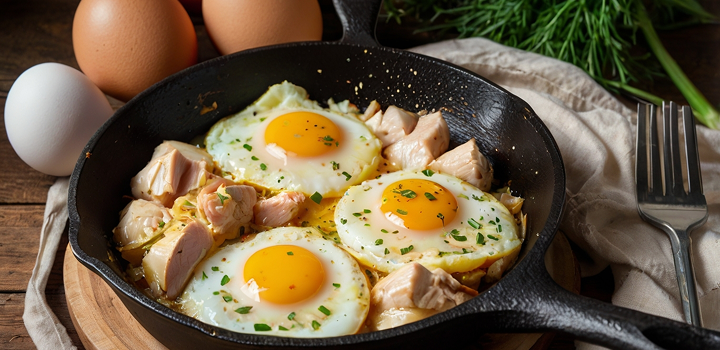
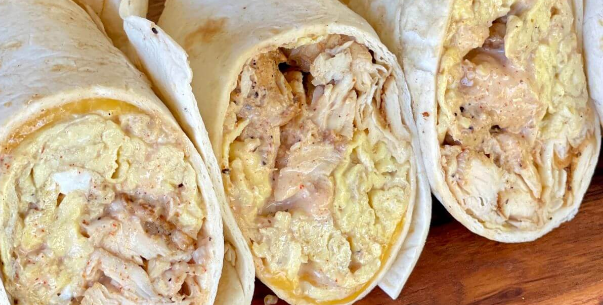
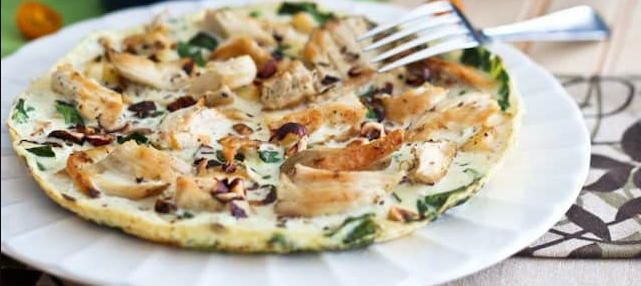
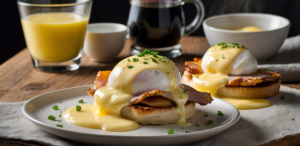
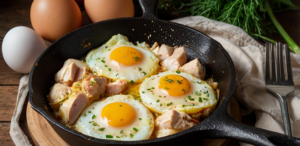

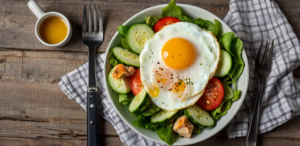
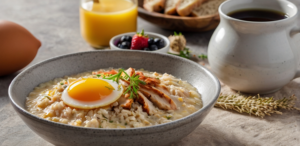
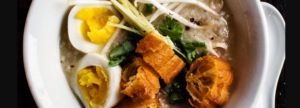


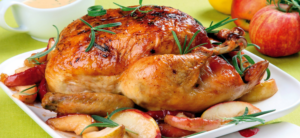

Post Comment